
By: Paul Simonin, PhD
Among the Wildflowers
Innumerable switchbacks guide our way steadily up towards the 14,000 foot Chele-la, one of the highest road passes in Bhutan linking the Paro and Haa Valleys. Having reached mid way the temperature has dropped and the vegetation changed. Where before were Himalayan Blue Pines and Brown Oaks, the forest has transitioned to Hemlocks, Silver Fir and Larch draped in garlands of wispy moss. The cool, misty air and primeval wood are nostalgic of the Pacific Northwest. However, we are high in the Himalayas, traversing a vertical world of changing life zones and forest types.
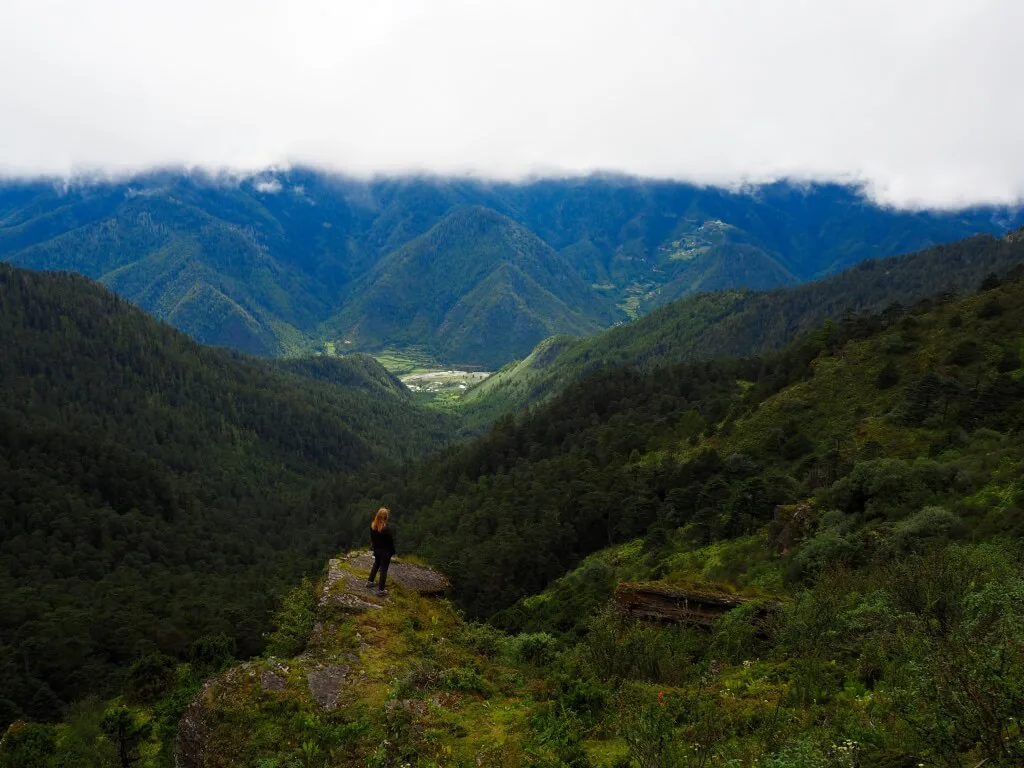
In these mountains, flora and fauna transition rapidly depending on slope, aspect and altitudinal zonation, all of which shape distinct micro-climates and life zones. With multiple environments existing across the spectrum of just one mountain range, many niches can be filled by different organisms. These conditions allow a variety of species to thrive, accounting for the Eastern Himalayas designation as one of the planet’s biodiversity hotspots: regions of exceptional species diversity.
We’ve been learning about the role of mountains in promoting species diversity in our lectures, but being in the field witnessing the transition of trees and feeling the pinprick of goosebumps on our bare arms as we ascend higher and higher, is a far more visceral way of understanding life zone ecology. It’s also simply more fun.
As we pause by the road to stretch our legs, Dr. Purna Chetri – professor of Land Use and Natural Resources – quizzes everyone on the various tree species in a nearby grove. He points at one, then another asking which is which. When a someone ventures a correct reply like “Himalayan Silver Fir” he recites the Latin name and gleefully shouts out “Bingo!”. We all can’t help but laugh as the road twists and turns ever higher passing through new life zones, passing new species. Maples, Paper Birch and a profusion of Rhododendrons line the way to the Chele-la.
At the pass we’re buffeted by cold winds and banks of fog that obscure the views one moment, only to reveal soaring vistas the next. At 14,000 feet we are as high as the tallest peaks in the lower forty-eight states, and yet this is only a road pass in Bhutan. Knowing this, it’s humbling to gaze beyond into an ocean of even greater mountain ranges rolling away into Tibet.

We’ve ventured up here to learn about life zone ecology first hand, but also to enjoy the spectacle of late summer wildflowers and alpine meadows. Along the wind scoured ridges of the pass, the tree line stops and another vegetation zone begins. Much of this area is alpine meadow ablaze with colorful wildflowers, framed by patches of dwarf shrubs and nests of prayer flags flapping in the wind.
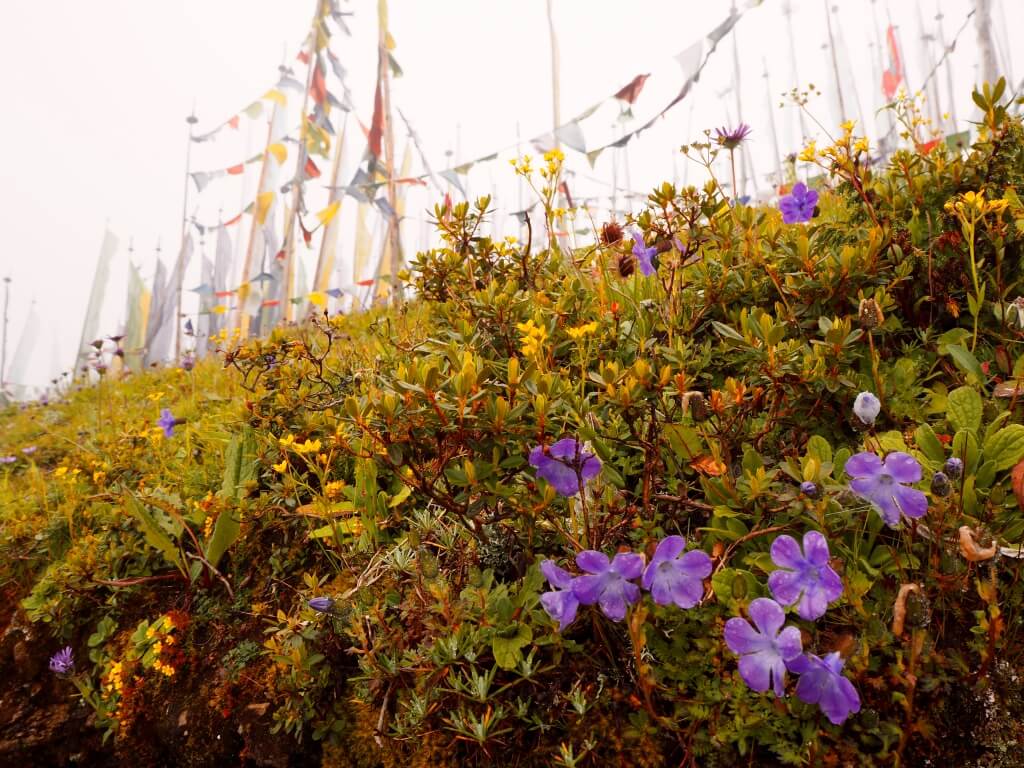
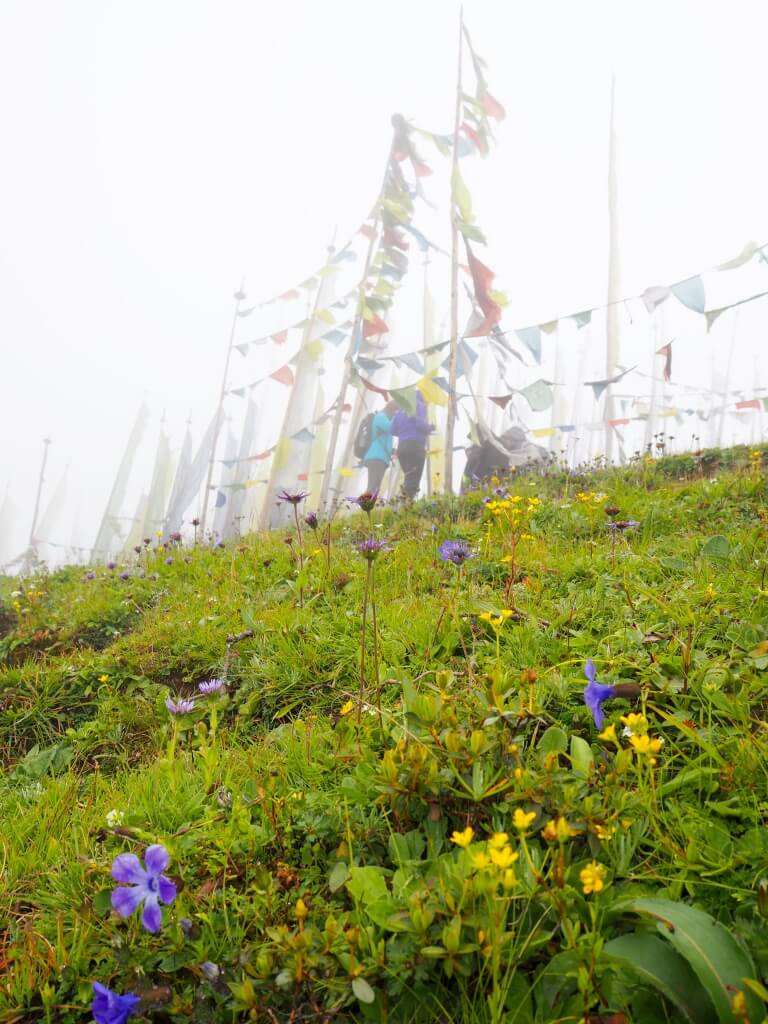
After a picnic lunch we split into groups to practice vegetation survey techniques using line transects and quadrants. This technique is an easy way to gather information on vegetation cover that can be used for studies ranging from measuring succession to habitat assessments for wildlife. Additionally, it presents an opportunity to compare species richness. Using quadrants we can identify wildflowers by species and quantify vegetation cover to gain a rough idea of alpha and beta diversity, indices of species richness and turnover between respective sites.
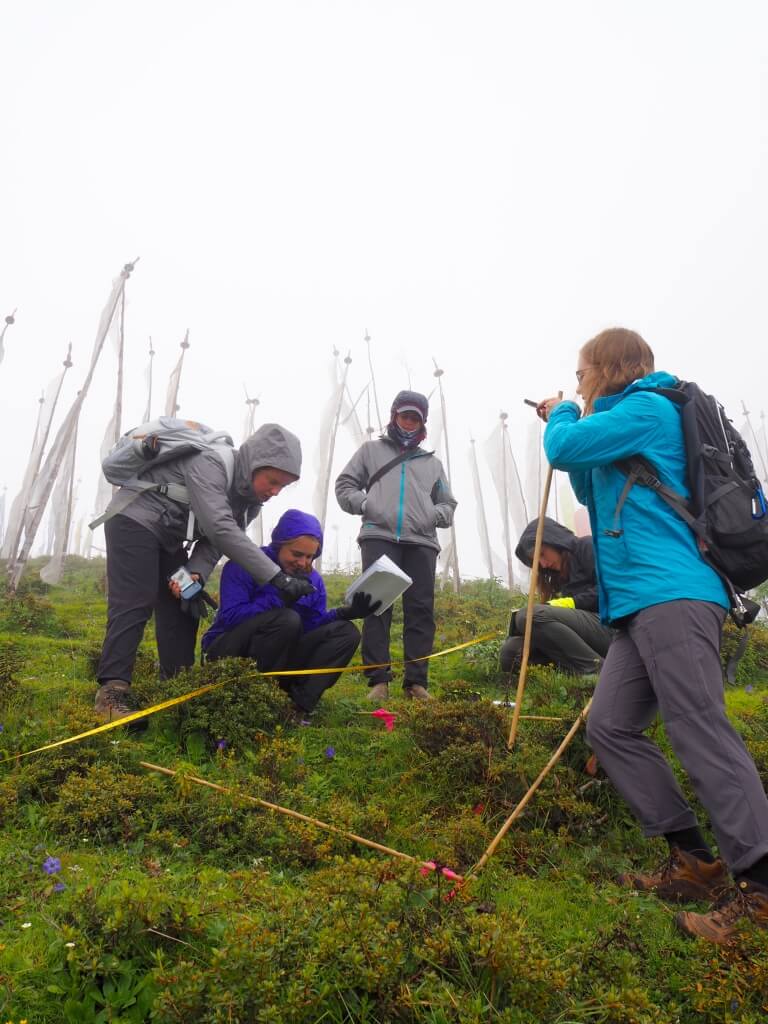
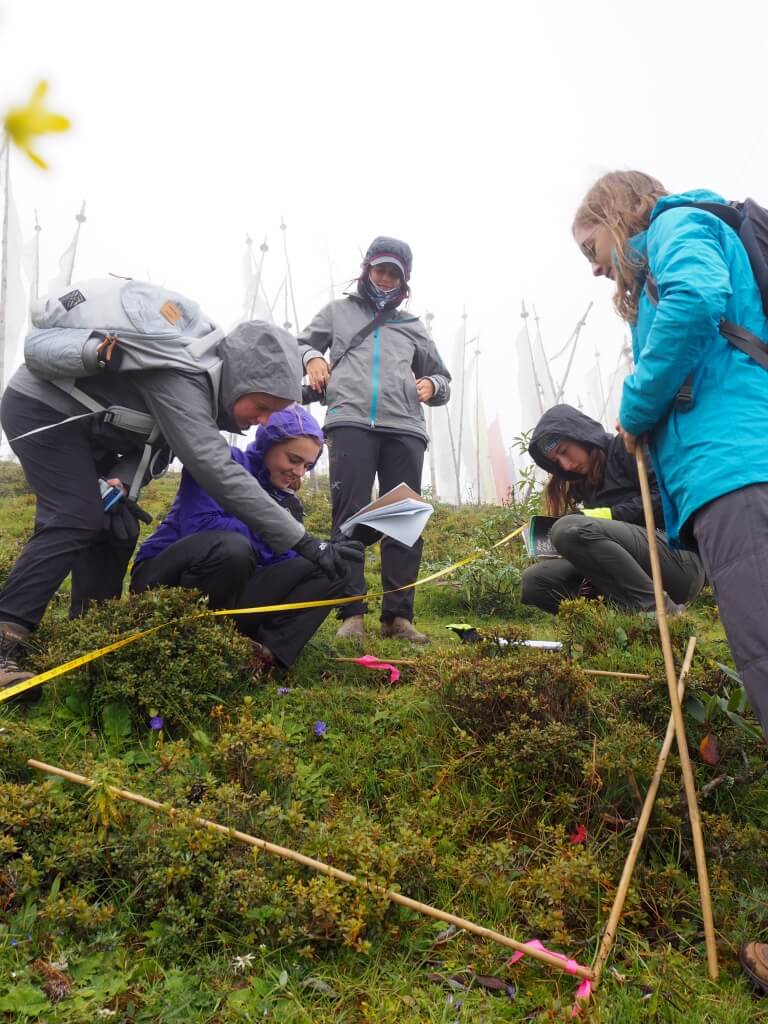
Spreading out in groups across the ridge-line we get down to the tricky business of identifying the wildflowers around us. As we’re all newbies, we do our best using field guides. It’s not easy. Asters, Saxifrage, Edelweiss and a profusion of similar, but slightly different species complicate our progress. Meanwhile, steep hillsides and jutting poles of prayer flags bar our way.
Further up this hillside, rough slabs of stone inscribed with mantras mark the site of an old sky burial site. In Bhutan and Tibet some people perform death rites by leaving the dead on high mountain tops to be consumed by birds and scavengers. In Buddhist tradition, nourishing the life of another being is believed to be the most pure form of compassion even in death. As we wander amongst the tall prayer poles and swirling fog its easy to imagine ghosts and spirits hidden in the mist. Yet, all that emerges are the lumbering shapes of grazing ponies…
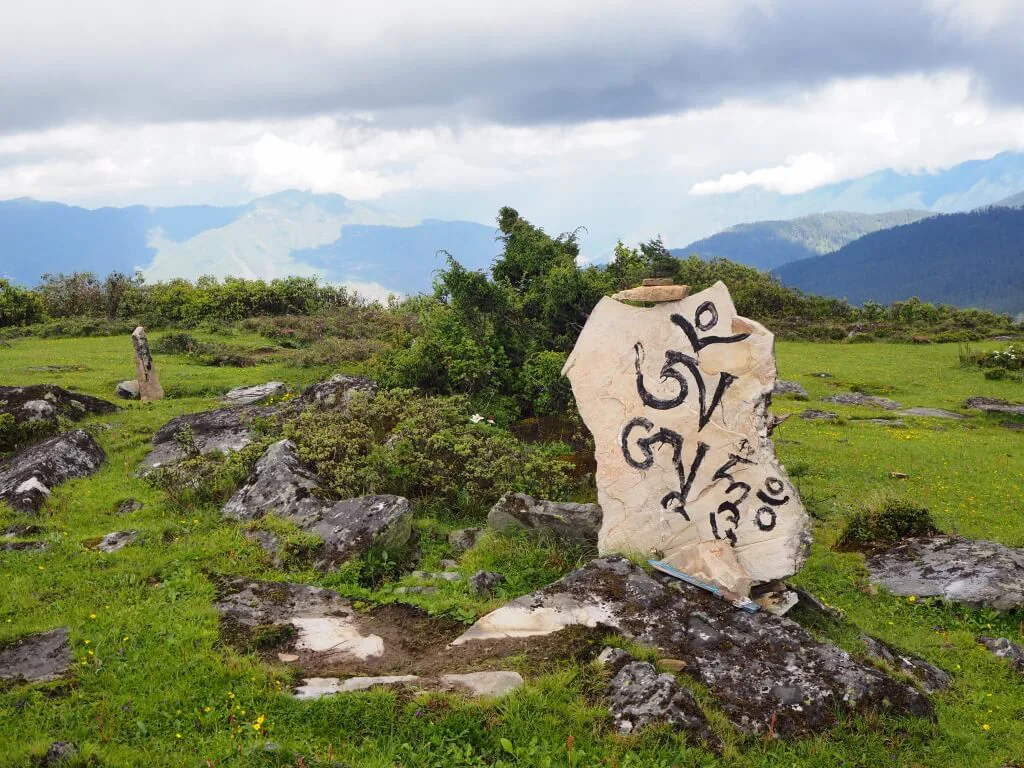
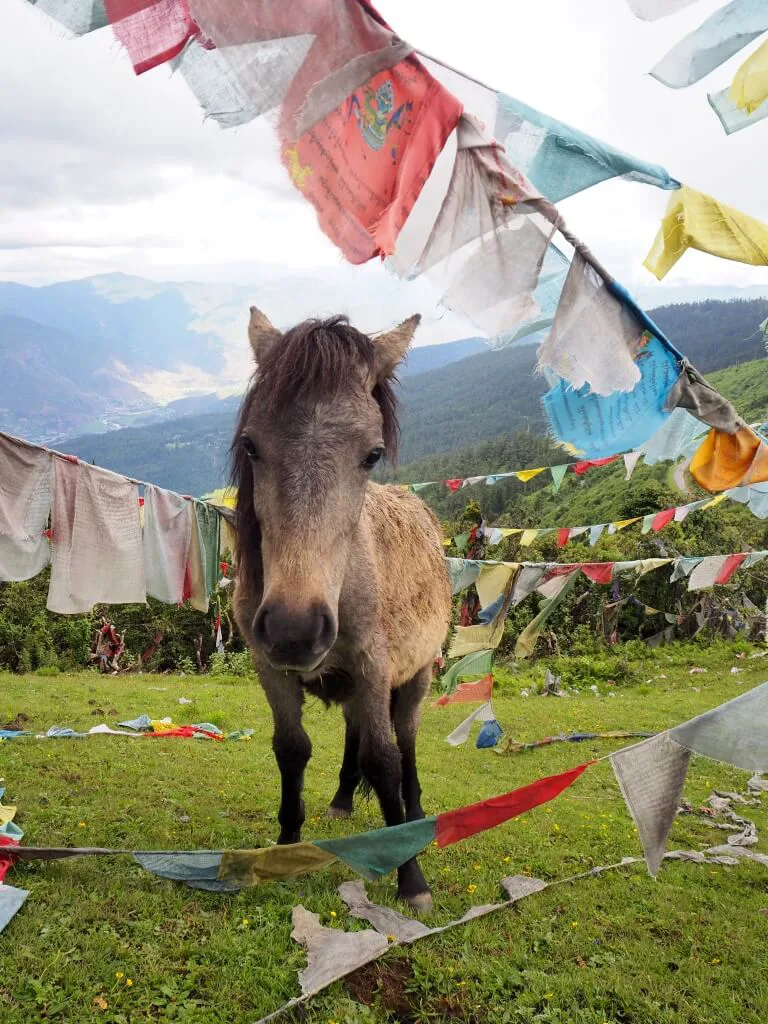
After the lesson we gather round again atop the pass, huddling in the wind. As if an auspicious sign, the mist begins to clear and we’re blessed with the best views all afternoon. On one side we can look back from whence we came to the Paro Valley, while on the other we are confronted by great sweeping views of Haa and the ranges beyond.
As the crow flies it seems so close, but we now know how much time and effort it takes to traverse these slopes. Like most, we are just visitors to the high mountains. They are the abodes of mist, wind, spirits and many, many wildflowers. Before heading down to the Paro Valley we pick bouquets of delicate blooms to press and dry. Keepsakes, mementos and memories of alpine meadows and high mountain tops.
Related Posts

Camila Rojas: Alumni Spotlight⭐

